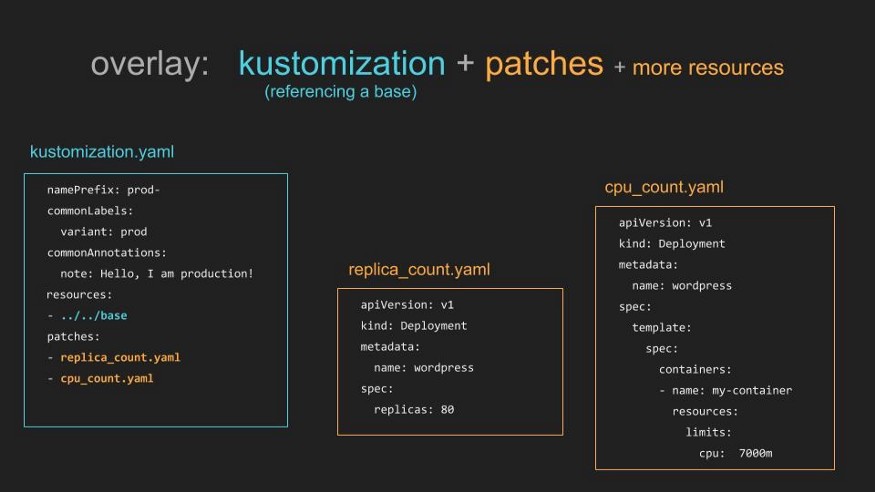Architecture
From their site, Kustomize has a very wide usage:
- Kustomize helps customizing config files in a template free way.
- Kustomize provides a number of handy methods like generators to make customization easier.
- Kustomize uses patches to introduce environment specific changes on an already existing standard config file without disturbing it.
It’s a perfect tool to create environment based customizations to your k8s deployments. kustomize uses a concept of bases and overlays, where you define a base and then you create overlays which customize the configuration depending on your environment. There is a pretty cool diagram in their github:












